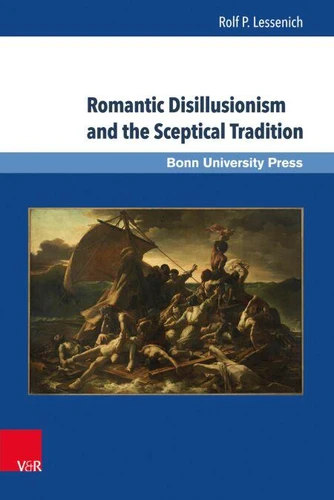Romantic Disillusionism and the Sceptical Tradition
Par :Formats :
Disponible dans votre compte client Decitre ou Furet du Nord dès validation de votre commande. Le format PDF est :
- Compatible avec une lecture sur My Vivlio (smartphone, tablette, ordinateur)
- Compatible avec une lecture sur liseuses Vivlio
- Pour les liseuses autres que Vivlio, vous devez utiliser le logiciel Adobe Digital Edition. Non compatible avec la lecture sur les liseuses Kindle, Remarkable et Sony
 , qui est-ce ?
, qui est-ce ?Notre partenaire de plateforme de lecture numérique où vous retrouverez l'ensemble de vos ebooks gratuitement
Pour en savoir plus sur nos ebooks, consultez notre aide en ligne ici
- Nombre de pages484
- FormatPDF
- ISBN978-3-8470-0632-9
- EAN9783847006329
- Date de parution16/01/2017
- Protection num.pas de protection
- Taille4 Mo
- Infos supplémentairespdf
- ÉditeurV&R Unipress
Résumé
Platonic Romanticism had a dark underside from its inception: Romantic Disillusionism, encompassing the Gothic and the new demonic doppelganger. The Classical Tradition's conflict between Plato and Pyrrho, foundationalism and scepticism, optimism and pessimism was thus continued. Lord Byron's was the most listened-to and echoed voice of Romantic Disillusionism in Europe, though by far not the only one.
This comparative study of a multiplicity of sceptical English, French, German, Italian, Spanish, Russian, Polish, and Czech voices shows how traditional Pyrrhonic arguments were updated to suit the decades of the Romantic Movement, surviving as a subversive countercurrent to later Victorianism and resurging in the literature of the Decadence and Fin de Siècle.
This comparative study of a multiplicity of sceptical English, French, German, Italian, Spanish, Russian, Polish, and Czech voices shows how traditional Pyrrhonic arguments were updated to suit the decades of the Romantic Movement, surviving as a subversive countercurrent to later Victorianism and resurging in the literature of the Decadence and Fin de Siècle.
Platonic Romanticism had a dark underside from its inception: Romantic Disillusionism, encompassing the Gothic and the new demonic doppelganger. The Classical Tradition's conflict between Plato and Pyrrho, foundationalism and scepticism, optimism and pessimism was thus continued. Lord Byron's was the most listened-to and echoed voice of Romantic Disillusionism in Europe, though by far not the only one.
This comparative study of a multiplicity of sceptical English, French, German, Italian, Spanish, Russian, Polish, and Czech voices shows how traditional Pyrrhonic arguments were updated to suit the decades of the Romantic Movement, surviving as a subversive countercurrent to later Victorianism and resurging in the literature of the Decadence and Fin de Siècle.
This comparative study of a multiplicity of sceptical English, French, German, Italian, Spanish, Russian, Polish, and Czech voices shows how traditional Pyrrhonic arguments were updated to suit the decades of the Romantic Movement, surviving as a subversive countercurrent to later Victorianism and resurging in the literature of the Decadence and Fin de Siècle.




